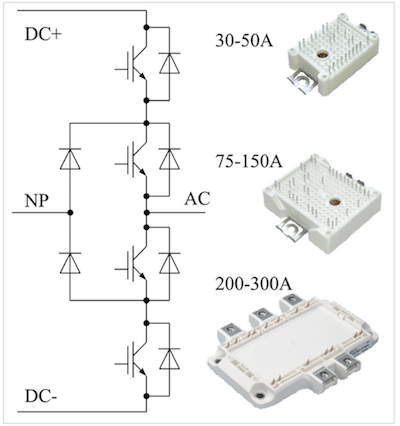The classical, centralized power supply grids today face a transition into a so-called smart grid. This smart grid can be understood as a system of systems or the sum of interlinked minigrids with massively decentralized energy generation, storage and consumption. Though todays large scale power plants will remain the major backbone of these grids for the years to come, the change will allow the more efficient use of a growing portion of renewable energies, finally eliminating the usage of fossil fuels and nuclear power. Besides the power generation and transmission, storing of energy, communication and security issues will be part of this change, making semiconductors in all ranges the dominant key component of these new megastructures.
TRANSITION TO SMART GRID
Centralized power generation as done today benefits from plants with huge power densities that predictably operate on demand. Regulation strategies are well established and throughout the last 50 years, an interconnected European power grid grew to become one of the most complex technical achievements. Generators, rotating at fixed frequencies and controlled using the external excitation provide stable frequency, constant voltage and the amount of reactive power needed.
With the urge to make use of renewable energy to fight global warming and reduce CO2 emissions, windmills and solar arrays started to become a growing fraction of power sources. However, both generate electricity stochastically, depending on the availability of their particular primary energy. As their output voltages are of fluctuation nature and in case of solar cells are of DC-character, power electronic became necessary to transfer the power delivered into a form that can be fed into the grid.
Inverter Technology based on Insulated Gate Bipolar Transistors (IGBT) became the industrial standard for this particular task. Additionally, the transport of and use of electricity will change in a smart grid compared to today. Locally generated power will be used locally, thus eliminating the losses during transportation. Energy storage will at least partially compensate the lack of continuity in power generation. This will contribute to cutting peak power demand. At the same time, transport across long distances has to be achieved at maximum efficiency to interconnect off-shore wind parks to the continents or transfer energy on a global scale as envisioned in the Desertec Project. This is the domain of High Voltage Direct Current power transmission (HVDC), a typical application for thyristors and bipolar diodes.
REGENERATIVE ENERGY GENERATION
Sun, wind and biomass are three major sources of renewable energy to generate electricity. Especially photovoltaic solar applications and wind power plants benefit from the use of power electronics.
A. Photovoltaics
PV-Collectors generate a DC-voltage and the magnitude of output power is a function of solar radiation. To feed energy into the grid, a minimum voltage level is required. Furthermore, the DC-voltage has to be transferred to an AC voltage compatible to the mains. This is a classical task for power electronic components. Schematically, figure 1 hints out the blocks, a solar power plant may consist of. The dashed lines denote optional components. The DC-AC-converter is a mandatory component and essential to generate a grid-compliant AC output.

Today, solar plants are installed from several hundreds of watts up to the megawatt scale. This requires a wide range of power semiconductor components. The driving force in improving existing solar inverters for the European market during the last years has been advancement in system efficiency. Modern solar converters thus have reached maximum efficiencies of more than 98%.
Recently, a visible trend is the step away from 2-level converters towards multilevel topologies. Mainly the 3-level inverter is more and more in focus. The so-called Neutral Point Clamped (NPC)-topologies are preferred in higher power levels. This leads to systematic advantages regarding electrical losses and physical sizes of wound goods in filter components. Figure 2 depicts the often used NPC-1 topology which is well established in solar inverter designs. It is predestined to be used in a power range up to several hundreds of kilowatts.

B. Wind Energy Generation
In 1983, German energy provider RWE was involved in building the first 3MW windmill Grosse Windkraft Anlage (engl.: Large Windmill System) called Growian. It used a Leonard Converter to feed energy to the grid. Today, windmills feature output powers of up to 6MW per device. Double fed induction generators coexist with synchronous machines. Both, permanently and separately excited machines are in use.








